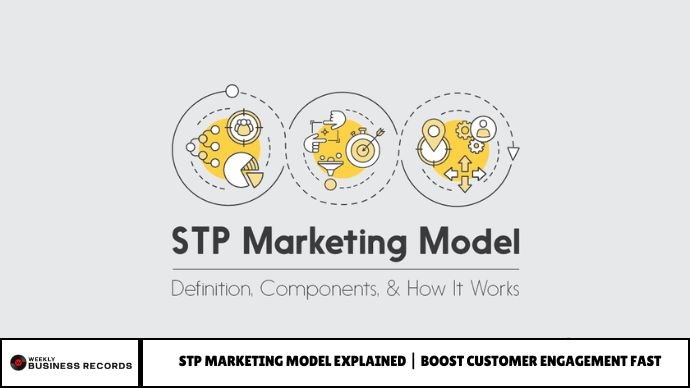The STP marketing model—Segmentation, Targeting, Positioning—helps marketers craft focused strategies that resonate with the right audiences. This article explores each stage, offering practical tips and up-to-date data to help you boost customer engagement, marketing ROI, and brand clarity.
The STP marketing model—Segmentation, Targeting, and Positioning—is a cornerstone of modern marketing strategy. Widely adopted by marketers across industries, it’s known for driving clear, customer-focused communication and greater commercial impact.
At its core, STP helps businesses identify their most valuable audience segments and tailor both their marketing mix and product positioning to serve each group effectively. By aligning messaging with specific customer needs, companies boost engagement, relevance, and return on investment.
As marketing technology (MarTech) evolves, so do the ways we can segment audiences, target them with precision, and position our brands to resonate. Whether you’re just learning the ropes or revisiting your current strategy, now is the perfect time to ensure you’re maximising every opportunity to reach, convert, and retain your ideal customers.
But how do you decide which segments matter most?
We recommend starting with detailed buyer personas—they give you a clear picture of who your high-value customers are and how best to reach them.
Introduction: Why Mass Marketing No Longer Works
Today’s consumers expect personalisation. Generic campaigns no longer deliver the results they once did. With increasing competition and saturated markets, brands need sharper strategies to reach the right people with the right message.
That’s where the Segmentation, Targeting, and Positioning (STP) marketing model comes in. Used by brands like Nike, Apple, and Coca-Cola, this framework helps businesses narrow their focus, connect deeply with customers, and stand out in the crowd.
1. Segmentation: Understand Who Your Audience Really Is
Segmentation divides a broad market into smaller, more manageable groups based on shared characteristics.
Common segmentation criteria:
- Demographic – age, gender, income, education
- Geographic – location, climate, region
- Psychographic – values, interests, lifestyle
- Behavioral – purchase habits, brand loyalty, usage rate
2. Targeting: Choose the Right Segments to Serve
Once segments are defined, targeting involves selecting the most viable ones for your brand to pursue.
Targeting strategies:
- Undifferentiated – One message for all (rare today)
- Differentiated – Different messages for each segment
- Concentrated – Focus on one niche
- Micromarketing – Hyper-personalised targeting
3. Positioning: Define Your Brand in the Mind of the Customer
Positioning is how your brand is perceived in comparison to competitors.
Steps to effective positioning:
- Identify what your audience values most
- Analyze competitor positioning
- Craft a unique value proposition
- Align messaging across all touchpoints
4. Bringing It All Together: STP in Action
Let’s say you’re launching a new fitness app.
- Segmentation: Identify tech-savvy millennials in urban areas
- Targeting: Choose health-conscious, time-starved professionals aged 25–35
- Positioning: “The fastest, smartest way to stay fit on your schedule”
5. Measuring Success and Iterating
Great marketing evolves.
Track KPIs like:
- Customer acquisition cost (CAC)
- Conversion rates by segment
- Brand awareness and recall
- Customer satisfaction (NPS)
Frequently Asked Questions (FAQs)
1. What is the STP marketing model?
STP stands for Segmentation, Targeting, and Positioning—a framework used to tailor marketing to specific audiences.
2. Why is STP important in marketing?
It helps deliver personalised experiences, increase engagement, and improve marketing ROI.
3. How does segmentation differ from targeting?
Segmentation identifies potential groups; targeting selects the ones you’ll focus on.
4. Can small businesses use the STP model?
Yes! Even solo entrepreneurs can benefit by clearly defining their niche and brand position.
5. How often should I revisit my STP strategy?
Review it quarterly or whenever there’s a major market shift or product change.
6. What’s the best way to define a positioning strategy?
Focus on what makes your brand unique and how that solves your target audience’s core problem.
Conclusion
The STP model moves you from broad, unfocused marketing to a clear, customer-centric approach. By identifying the right segments, targeting them strategically, and positioning your brand effectively, you maximise impact and minimise wasted effort.


